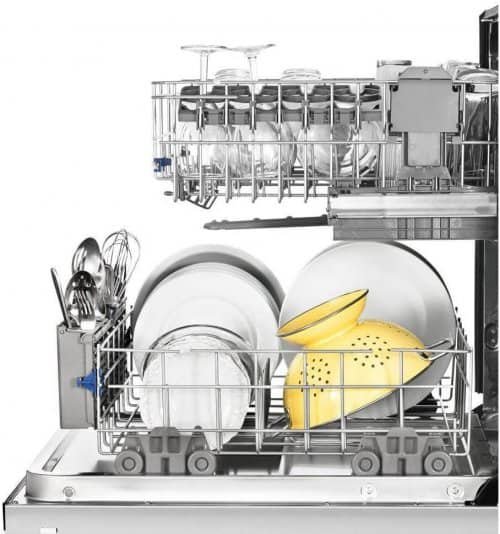In modern households, dishwashers have become an essential appliance that saves time and effort in cleaning dishes. KitchenAid dishwashers are renowned for their reliability and efficiency. However, like any complex electronic device, they may encounter issues over time. Fortunately, KitchenAid dishwashers come equipped with a diagnostic mode that helps users identify potential problems and allows for troubleshooting. In this article, we will explore the KitchenAid dishwasher diagnostic mode and provide a step-by-step guide on how to utilize it effectively.
Table of Contents
Understanding the Diagnostic Mode
The diagnostic mode in a KitchenAid dishwasher is a specialized setting that enables the appliance to run various tests and checks on its systems. It provides valuable information about any underlying issues, which aids in diagnosing problems accurately.
Entering the Diagnostic Mode
To enter the diagnostic mode, follow these steps:
Step 1 – Activation
- Ensure the dishwasher is empty and turned off.
- Locate the control panel and press the following buttons in sequence within 8 seconds: “Heated Dry,” “Normal Wash,” “Heated Dry,” “Normal Wash.”
Step 2 – Diagnostic Cycle
- Once the diagnostic mode is activated, all the lights on the control panel will illuminate. The dishwasher will now enter the diagnostic cycle.

Running Diagnostic Tests
During the diagnostic cycle, each component of the dishwasher will be tested. The display will show codes to indicate the results of each test. Here’s how to interpret the codes:
1 Flash
- If a code with one flash appears on the display, it indicates an issue with the heating element.
2 Flashes
- Two flashes indicate a problem with the water inlet valve.
3 Flashes
- Three flashes signify an issue with the wash motor.
4 Flashes
- Four flashes point to a problem with the dishwasher’s door switch.
5 Flashes
- Five flashes indicate a fault in the circulation pump.
6 Flashes
- Six flashes signify an issue with the water temperature sensor.
7 Flashes
- Seven flashes indicate a problem with the flow meter.
8 Flashes
- Eight flashes signify an issue with the turbidity sensor.
9 Flashes
- Nine flashes indicate a problem with the diverter motor.
10 Flashes
- Ten flashes signify an issue with the dispenser motor.
Completing the Diagnostic Cycle
Once all the tests are completed, the dishwasher will automatically reset. If no issues are detected, the display will show a code “888” or “CLEAN” to indicate a successful diagnostic cycle.
Is it safe to run the diagnostic mode on my KitchenAid dishwasher?
Yes, the diagnostic mode is specifically designed for troubleshooting purposes, and running it is safe.
Can I fix the issues myself based on the diagnostic codes?
In some cases, simple issues can be fixed by users themselves. However, for complex problems, it is best to seek professional assistance.
How often should I run the diagnostic mode on my dishwasher?
It is recommended to run the diagnostic mode whenever you encounter persistent problems or every few months as part of regular maintenance.
My dishwasher’s display is showing an error code. What should I do?
If an error code is displayed, consult your dishwasher’s user manual to identify the specific problem and potential solutions.
What if the diagnostic mode doesn’t identify any issues, but my dishwasher is still not working correctly?
If the diagnostic mode doesn’t show any problems, but you still experience issues with your dishwasher, it’s best to contact a professional technician for a thorough inspection.
Conclusion
The KitchenAid dishwasher diagnostic mode is a valuable tool that allows users to troubleshoot potential problems effectively. By following the simple steps outlined in this guide, users can identify issues with their dishwasher’s components and seek appropriate solutions. Remember to exercise caution and refer to the dishwasher’s user manual for more information.

